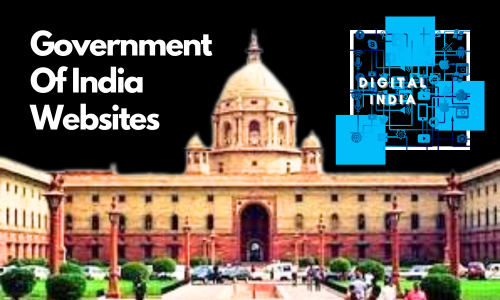Government companies will not be sold to private companies and industrialists (privatization). Instead of selling PSU, the central government will take measures to improve their profits and earn revenue from these companies.
According to media reports, the central government is now preparing to put the privatization program on hold. Previously, the Modi government had made an ambitious plan to privatise government companies. It was believed that the government could forward rapidly privatisation in the third term. But now the government has indicated to withdraw from this scheme.
Plan for government companies
As per the report from government sources, the government is working on a plan to improve the profits of more than 200 government companies. According to sources, Finance Minister Nirmala Sitharaman may announce a new scheme in the general budget to be presented on July 23. This includes selling a large portion of unused land held by companies and monetization of other assets.
Its objective is to raise $24 billion i.e. about Rs 2 lakh crore in the current financial year 2024-24. Moreover, this amount will be re-invested in PSU. Under the new scheme, instead of short-term targets, 5-year performance and production targets can be set for each government company. An official said the government is now shifting its focus from indiscriminate asset sales to enhancing the intrinsic value of PSU.
According to the plan announced in the year 2021, two banks, an insurance company and a PSU in the steel, energy and pharmaceutical sectors were to be sold. Also, loss-making companies were to be closed. However, the government was successful in selling only debt-ridden Air India to the Tata Group. Therefore, the government had to withdraw plans to sell some other companies. Only 3.5% of LIC’s stake has been sold. Moreover, shares of some other companies have been sold. Now the central government also wants to start a succession plan in its majority-owned companies. Besides, there is also a proposal to provide training to 2.30 lakh managers. Moreover, these managers will be prepared for senior roles in these companies.

List of Government companies in India
In India, government-owned companies, often referred to as Public Sector Undertakings (PSUs), operate in various sectors. Furthermore, the ownership of PSUs allows the Indian government to steer the economy towards its developmental goals, ensure national security, promote social welfare, and maintain control over strategic resources and sectors. Here are some notable examples:
Central Public Sector Enterprises (CPSEs)
- Oil and Natural Gas Corporation (ONGC). It is the largest government-owned oil and gas explorer and producer in the country. Furthermore, it produces around 70% of India’s domestic production of crude oil and around 84% of natural gas.
- Indian Oil Corporation (IOC). Moreover, IOCL is the biggest government company in India in terms of Revenue.
- Steel Authority of India Limited (SAIL). Moreover, SAIL is the biggest Iron and Steel company under the ownership of the Government of India.
- Bharat Heavy Electricals Limited (BHEL)
- National Thermal Power Corporation (NTPC)
- Coal India Limited (CIL). Moreover, Coal India is the biggest Coal Mining and Producing country in India.
- Gas Authority of India Limited (GAIL)
- Bharat Petroleum Corporation Limited (BPCL). It is one of the largest government-owned companies which produces oil.
- Hindustan Petroleum Corporation Limited (HPCL)
- Power Grid Corporation of India Limited (PGCIL)
- Neyveli Lignite Corporation Limited (NLC)
- Bharat Electronics Limited (BEL)
Banks and Financial Institutions
- State Bank of India (SBI). Moreover, State Bank is the biggest bank in India in terms of revenue, profit and number of branches.
- Punjab National Bank (PNB)
- Bank of Baroda (BoB)
- Life Insurance Corporation of India (LIC). Moreover, LIC is the biggest insurance company in India which holds more than 50% market share in life insurance and other insurance products.
- National Bank for Agriculture and Rural Development (NABARD)
- Export-Import Bank of India (Exim Bank)
Government Companies in Transportation
- Indian Railways
- Air India
- Shipping Corporation of India (SCI)
- Airports Authority of India (AAI)
Telecommunications
- Bharat Sanchar Nigam Limited (BSNL)
- Mahanagar Telephone Nigam Limited (MTNL)
Defence
- Hindustan Aeronautics Limited (HAL)
- Bharat Dynamics Limited (BDL)
- Mazagon Dock Shipbuilders Limited (MDL)
- Garden Reach Shipbuilders & Engineers Ltd (GRSE)
Infrastructure and Construction
- National Highways Authority of India (NHAI)
- National Buildings Construction Corporation (NBCC)
Mining and Metals
- National Aluminium Company Limited (NALCO)
- Hindustan Copper Limited (HCL)
- Manganese Ore India Limited (MOIL)
Agriculture
- National Fertilizers Limited (NFL)
- Rashtriya Chemicals & Fertilizers (RCF)
Government companies in the Energy sector
- Nuclear Power Corporation of India Limited (NPCIL)
- Power Finance Corporation (PFC)
- Rural Electrification Corporation (REC)
These companies play significant roles in India’s economy, contributing to infrastructure development, energy production, manufacturing, and financial services.





